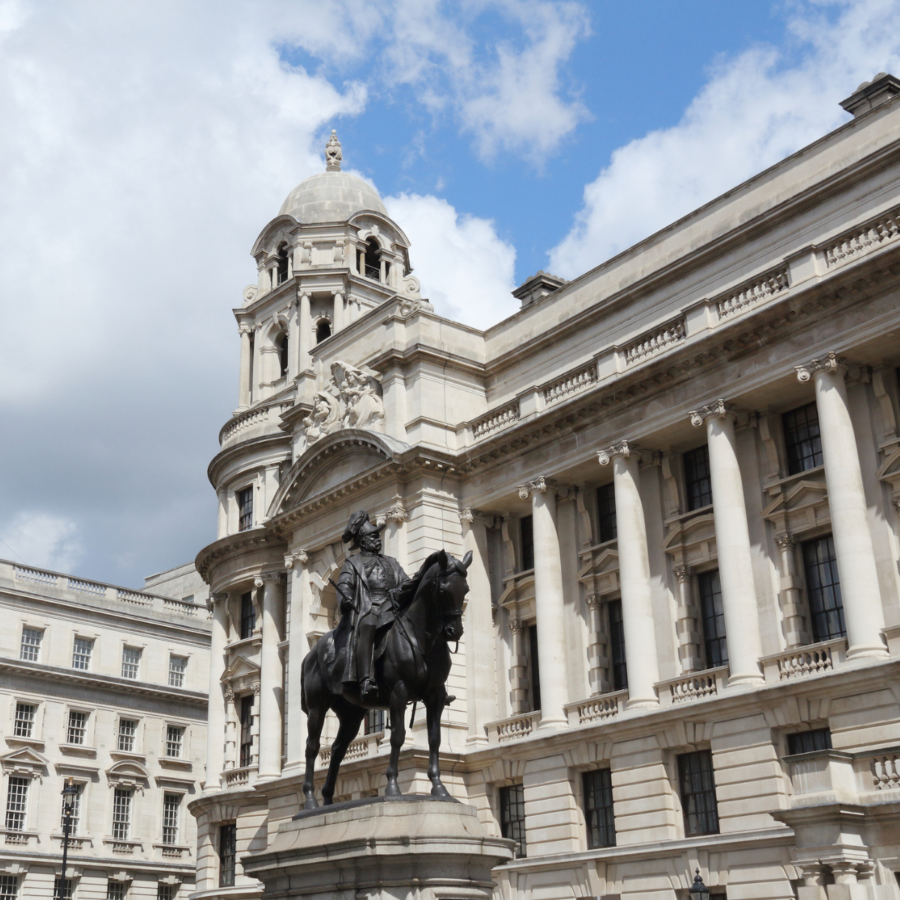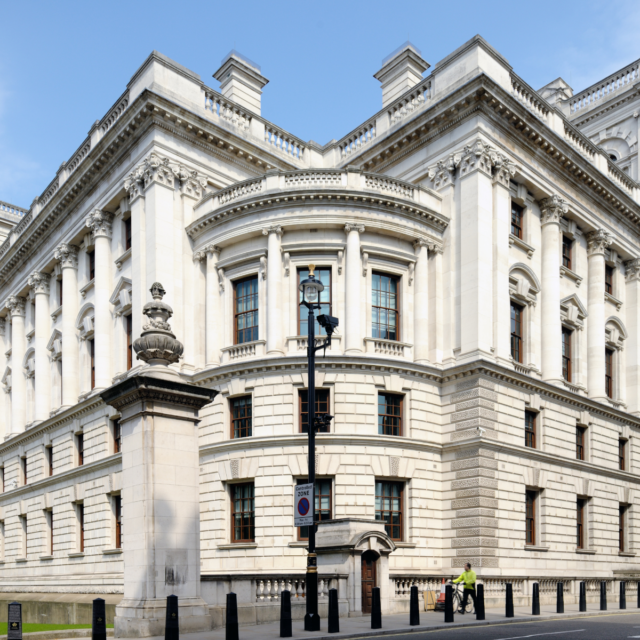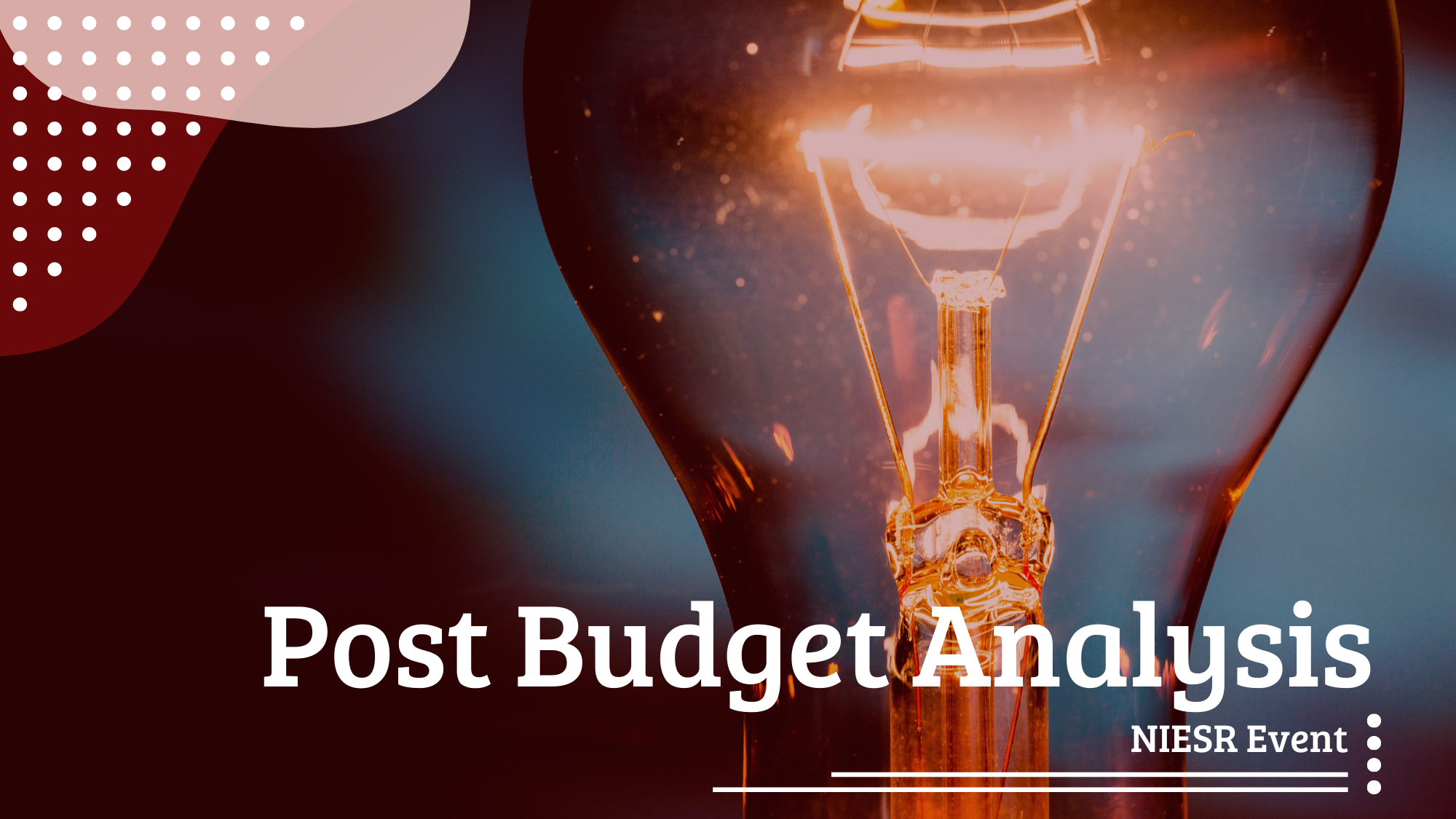The Truss/Kwarteng Mini Budget: One Year On
A year ago last Saturday, Chancellor Kwasi Kwarteng delivered the now ‘infamous’ mini-budget that led to both his departure and ultimately that of Prime Minister Liz Truss. In today’s Monday Interview, our Head of External Affairs, Neil Lakeland, spoke with our Deputy Director for Macroeconomic Modelling and Forecasting, Professor Stephen Millard, to ask for his remembrances of this event and his thoughts on the longer-term impact one year on.

Why don’t you start by reminding us of the background to the Mini-Budget?
The Mini-Budget was delivered on 23 September 2022 against a background of high and rising inflation and low economic growth. In fact, many commentators, including NIESR, thought that the UK economy had already entered recession. On top of that, the country was still in mourning after the death of Her Majesty Queen Elizabeth II on 8 September. Inflation stood at 9.9 per cent in August and was expected to rise to between 11 and 12 per cent and the Monetary Policy Committee (MPC) of the Bank of England had responded by raising rates to 2.25 per cent on 22 September, though we expected rates to rise further to a peak of 5 per cent by now. Energy prices had risen significantly, and the government had responded by announcing, on 8 September, the ‘Energy Price Guarantee’, which fixed the price per unit that households would have to pay for two years, resulting in an annual bill of around £2,500 for the typical household. NIESR had already responded to this policy arguing that the support was not sufficiently well targeted (particularly relative to our suggestion of a ‘Variable price cap’) and would not lead to lower energy use as the cap removed any incentive for households to cut back.
In terms of the government’s finances, the latest data had suggested that borrowing in the first five months of the 2022-23 fiscal year was close to the Office for Budget Responsibility’s (OBR) March Forecast. But the previously announced energy bill support measures and the energy price guarantee would only start worsening the public finances from October. Public-sector net debt (PSND) stood at 96.6 per cent of GDP in August, 1.1 percentage points higher than the OBR’s March forecast.
But more important than the economic background was the political background. Within days of Liz Truss taking office as Prime Minister, the Head of HM Treasury, Sir Tom Scholar, had been sacked. This move was seen by many as a direct challenge to the independence of the Treasury, particularly as the Prime Minister had made clear in her campaign to become Conservative Party Leader that she wanted to change ‘Treasury Orthodoxy’. In addition, she had also made clear in the campaign that she was going to open up the issue of Bank of England independence. And, finally, the Chancellor asked the OBR not to produce their independent forecast and analysis to accompany the Mini-Budget. The financial markets saw all of this as a clear message that the new Prime Minister and Chancellor were challenging/ignoring the advice of the very institutions that had ensured economic and financial stability within the United Kingdom. We explored some of these themes in a separate commentary, which was published in the National Institute Economic Review.
What were the main features of the Mini-Budget itself?
The Mini-Budget was delivered on 23 September 2022. The aim was to unveil ‘The Growth Plan’ that was to be the centrepiece of economic policy for the new government. The Chancellor announced that the tax and spending changes contained within the Mini Budget would result in a trend GDP growth rate of 2.5 per cent. Given the history of UK economic growth – and particularly the recent history – this target always seemed unrealistic. But the way the Chancellor was going to achieve this target was via a series of unfunded tax cuts: bringing forward the previously announced 1 percentage point cut in the basic rate of income tax from April 2024 to April 2023 and cutting the top rate by 5 percentage points from 45 per cent to 40 per cent; reversing the April 2022 increase in National Insurance Contributions of 1.25 percentage points and the abolition of the ‘Health and Social Care Levy’; reversing the planned increase in the Corporation Tax Rate from 19 per cent to 25 per cent that was due to happen in April 2023; and raising Stamp Duty thresholds. On the spending side, in addition to the energy price guarantee for households, the Chancellor announced, on 21 September, a similar scheme to support businesses with their energy bills, capping wholesale energy prices for six months. Finally, in an additional attempt to spur the supply side of the UK economy, the Chancellor announced the creation of 38 new investment zones with liberalised planning rules and other incentives.
How did NIESR, and others, respond to this event?
Given the lack of OBR oversight of the Mini-Budget we thought it particularly important that NIESR offered an independent view of its effects. So, on the day of the Mini-Budget we produced an published our own analysis as well as holding a virtual Press Conference. The bottom line of our analysis was that the Mini-Budget represented a fiscal expansion that would result in a short-run increase in demand, GDP, inflation and interest rates but that, in the longer run, would lead to an increase in government debt that would require a reversal of the tax cuts if public finances were to remain sustainable. And, in particular, we did not think the tax cuts would result in higher trend growth, contrary to the view of the Prime Minister and Chancellor.
This view was pretty much the view held in financial markets. But they went further. The assumption was that the unfunded tax cuts in the Mini-Budget were just the start and that more was to come. Adding that to the disregard for some of the key institutions in the UK system of government – HM Treasury, the OBR and the Bank of England – which had been shown by the Prime Minister and Chancellor in the weeks leading up to the Mini-Budget, financial markets were left ‘spooked’. This meant an increase in the risk premia they applied to UK gilts and, so, a dramatic rise in gilt yields, with the 10-year spot rate, for instance, rising by a little over one percentage point between 21 September and 27 September, accompanied by a fall in sterling to its lowest value against the dollar since 1985. As is well known, the rise in gilt yields led to a crisis for pension funds that had invested in LDIs and so the Bank of England intervened in the bond markets on 28 September. This intervention successfully brought bond rates back down. Once the Prime Minister and Chancellor were replaced by Rishi Sunak and Jeremy Hunt, respectively, and the main proposals in the Mini-Budget reversed, risk premia fell back to roughly where they were before the Mini Budget had happened.
One year on, what are the longer-term impacts of the Mini-Budget?
I’m not sure, to be honest, that there was that much permanent damage. As I said earlier, the risk premium on gilts yields fell back to where it was prior to the Mini-Budget. In terms of government finances, the decision to scrap the ‘Health and Social Care’ levy was retained, costing roughly £20 billion; all the other expansionary measures were scrapped. The rise in inflation in late 2022 and early 2023, together with the rise in interest rates we’ve seen over the past year, have worsened the government’s fiscal position, but that would have happened even without the Mini-Budget.
One group that would have been made permanently worse off, though, were those who remortgaged in the month or so after the Mini-Budget: two-year fixed mortgage rates had risen by almost two percentage points by 20 October relative to where they were on the morning of 22 September. This rise in mortgage payments for households remortgaging at this time was made worse by the fact that energy prices were also rising quickly. Of course, since then, mortgage rates have continued to rise, creating further problems for mortgage holders. But this has happened because of the rise in interest rates the MPC has had to engineer in order to tackle inflation. And we can’t blame the Mini-Budget for that.


